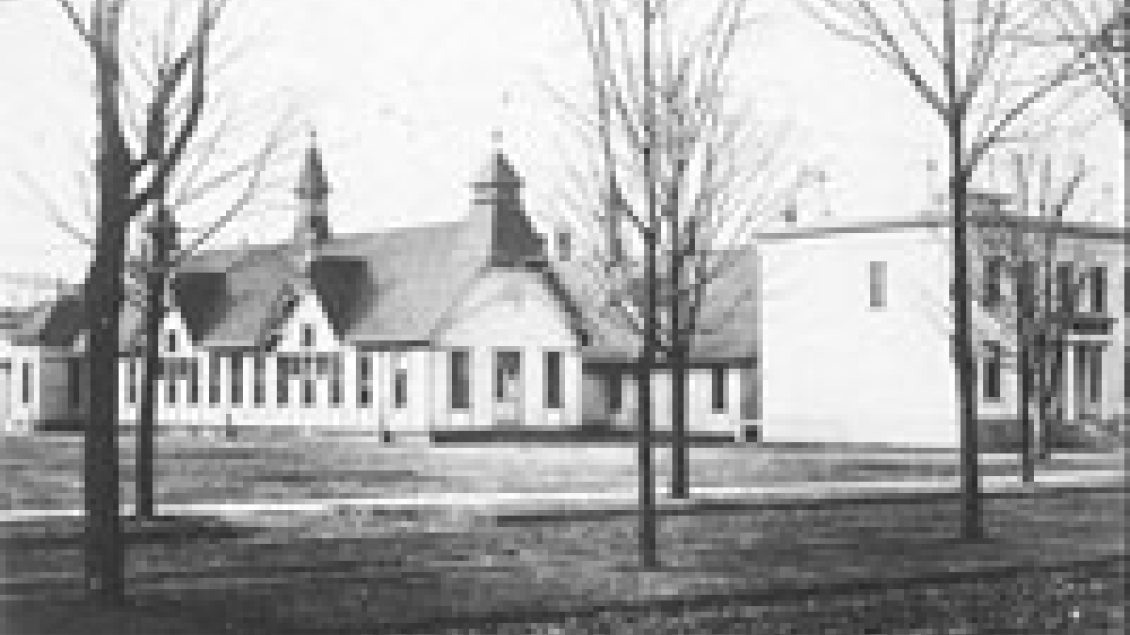
Orthopaedics has been part of the University of Michigan's rich medical tradition since 1873 when U-M faculty housing was converted into the University's first hospital.
Over the years, the department has expanded, evolved and embodied the latest technological and scientific advancements.
One of the reasons for the department's longevity and success is its faculty. Here is a look at some of the physicians responsible for creating the U-M Orthopaedic Surgery legacy:
Dr. Washburne became an Orthopaedic Surgery instructor in 1911 and an assistant professor in 1918. He left U-M for World War I and, upon returning from war, eventually became chief of staff at St. Joseph Hospital. Washburne's most notable publications explored club foot, polio, tuberculosis joints, and deformities of lower extremities.
When Hugh Cabot came to U-M from Harvard in 1920 to serve as dean, he brought young, talented orthopaedic surgeon Dr. Leroy Abbott. Dr. Abbott stayed at U-M until 1926, when he accepted the position of chief of orthopaedics at Shriners Hospital in St. Louis. In 1930, he headed west to assume the role of chief of orthopaedics at the University of California, San Francisco. Abbott was president of the American Orthopaedic Association in 1947 and is best known for his work in leg lengthening.
Dr. Hart shared his expertise with U-M patients and students from 1930 - 1933 before leaving to become chairman of orthopaedics at the University of Minnesota. Hart's most notable publication was a monograph on congenital hip dislocation.
Also during this time, Dr. Luis Yglesias pioneered radical neck surgery. Upon returning to Cuba, he served as Secretary of Health for Batista. When that government fell, he returned to Michigan and practiced at William Beaumont Hospital.
Dr. Carl Badgley, U-M Medical School graduate, served as section head of Orthopaedics from 1933 - 1964. In addition, he served as president of the American Academy of Orthopaedic Surgeons in 1942.
Also during this time, Mr. Capener developed a surgical treatment for TB of the spine. He also took a turn as president of the British Orthopaedic Association.
In 1945, Dr. Waring became the first female orthopaedic resident at U-M. She was the third female orthopaedic surgeon admitted to the American Academy of Orthopaedic Surgeons.
Dr. Bailey served the department from 1960 - 1985. He focused on cervical spine problems and was a founding member of the Cervical Spine Society. He is credited with performing the world's first anterior spinal fusion.
Dr. Smith was section head from 1963 - 1985. He served as chief of orthopaedics at Ohio State University for four years and received a Kappa Delta Award for his work on CDH and acetabular development puppies.
Dr. Louis completed his residency at U-M before heading to New York as the Carroll Hand Fellow at Columbia Presbyterian Hospital. In 1971, he returned to Michigan to join the U-M faculty. During his 30 years at Michigan, he specialized in children's hand problems and was president of the American Society for Surgery of the Hand. Today, he is a professor emeritus in the Department of Orthopaedic Surgery.
Dr. O'Connor was a team orthopaedist for 32 years. He developed MedSport at Domino's Farms in 1983 and is famous for not missing a U-M home game until 2003. In addition to his contributions at U-M, O'Connor was president of the American Orthopaedic Society for Sports Medicine from 1982 - 1983.
An American Orthopaedic Association Traveling Fellow, Dr. Matthews served as U-M section head from 1986 -1995. During that time, he developed the Orthopaedic Research Laboratory. Today, he is a professor emeritus Department of Orthopaedic Surgery.
Dr. Hensinger has been a pediatric orthopaedist at Michigan for more than 30 years. He was department section head from 1995 - 2001 and chairman from 2001 - 2003. In addition, he served as president of the American Academy of Orthopaedic Surgeons, the Pediatric Orthopaedic Society of North America, and the Scoliosis Research Society. Today, he is a professor specializing in pediatric orthopaedic surgery.
Dr. Carpenter was the department chair from 2003 to 2019. He was the Harold W. and Helen L. Gehring Professor of Orthopaedic Surgery and also served as a head orthopedist for U-M Athletics. His clinical interests include knee and shoulder injuries, arthroscopy, and sports medicine.
Dr. Michelle Caird was appointed chair on May 20, 2021. She is a Professor of Orthopaedic Surgery at the University of Michigan in the Division of Pediatric Orthopaedics. She joined the faculty at the University of Michigan in 2004 at the completion of her fellowship in Pediatric Orthopaedic Surgery at the Children’s Hospital of Philadelphia.
Dr. Caird is a passionate advocate for diversity, equity, and inclusion in her department and at Michigan Medicine. She instituted the orthopaedic surgery DEI Committee and is serving on Michigan Medicine’s Anti-Racism Oversight Committee. Caird is one of a handful of women in the U.S. to be appointed chair of an orthopaedic surgery department with a residency program.